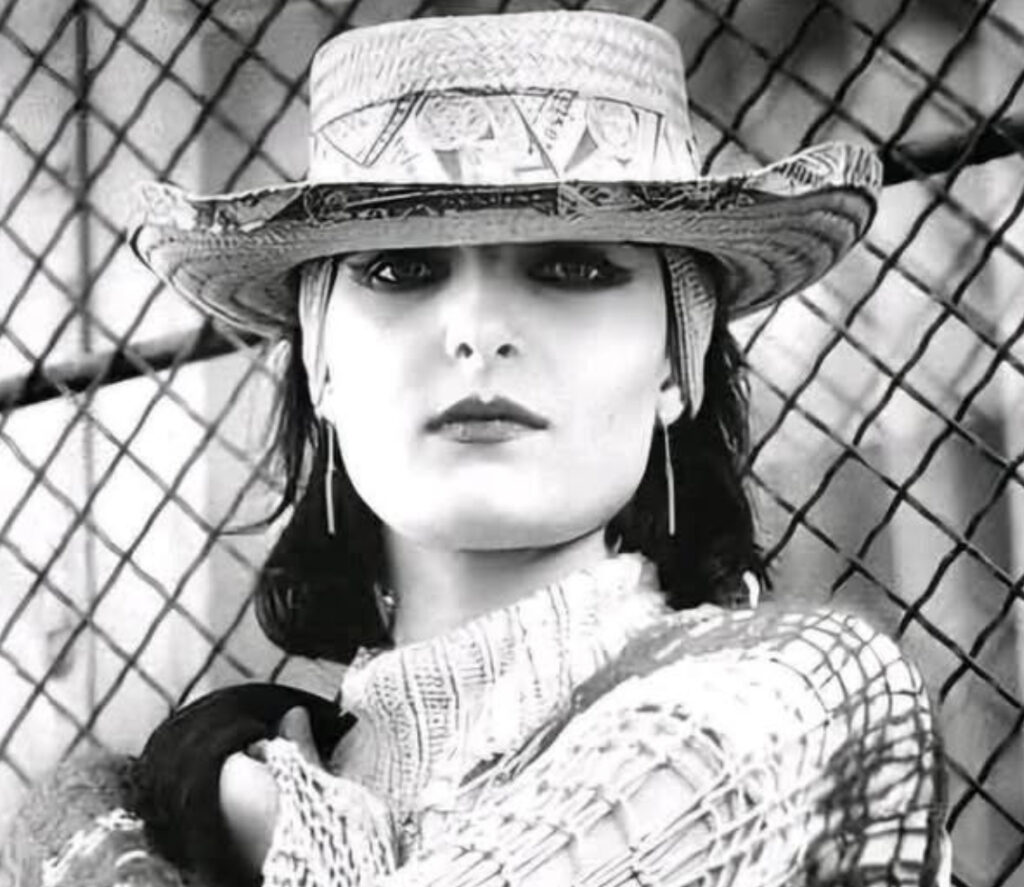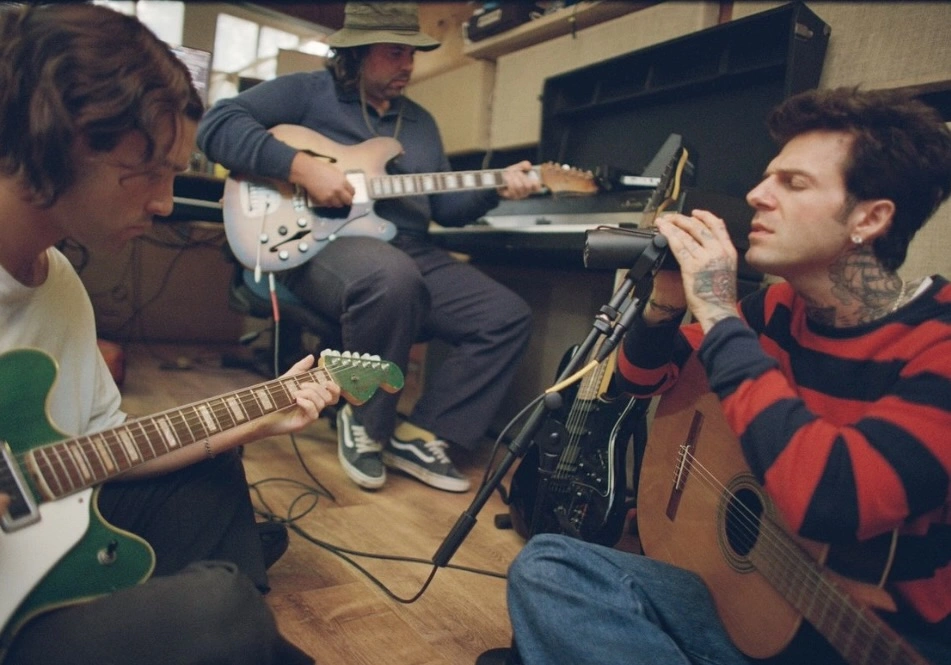In the kaleidoscope of 20th-century music, where sounds collided and new identities emerged, few figures burned with the singular fire of Siouxsie Sioux. Born Susan Janet Ballion on May 27, 1957, in Southwark, London, Siouxsie would become an oracle for the disaffected, the imaginative, and the bold. As the magnetic frontwoman of Siouxsie and the Banshees, she not only helped forge the shape of post-punk and gothic rock but also elevated the very notion of what a rock star could be — fierce yet vulnerable, mysterious yet achingly relatable.
Emerging from the chaos of Britain’s late-70s punk explosion, Siouxsie transformed rebellion into art. Through her startling visual style, haunted vocal delivery, and the ever-mutating soundscapes of her band, she constructed an enduring mythology: one where darkness was not something to fear but to explore.
The Birth of an Icon: Origins and Formation
Growing up amid suburban London’s oppressive conformity, young Susan Ballion developed a deep, instinctual resistance to societal norms. An early immersion in glam rock, avant-garde cinema, and controversial literature gave her a vocabulary of provocation long before she found her first stage.
Her entry into the world of music was almost mythic in itself. A devoted follower of the Sex Pistols, she found herself part of the Bromley Contingent — a loose-knit group of Pistols fans who would themselves later shape culture. From these chaotic, often violent gigs emerged the genesis of Siouxsie and the Banshees. Formed with bassist Steven Severin in 1976, the band first played at the legendary 100 Club Punk Special, performing an impromptu 20-minute version of “The Lord’s Prayer” that seared itself into punk folklore.
Even at this raw, chaotic inception, it was clear: Siouxsie Sioux was no mere follower. She was already leading.
The Scream: A Debut Like No Other
Released in 1978, The Scream did not sound like anything else on the landscape. Punk’s fiery energy was present, yes — but there was something colder, stranger, more expansive at work.
Tracks like “Jigsaw Feeling” and “Switch” eschewed simple three-chord thrashing in favor of jagged guitar textures, hypnotic basslines, and rhythmic claustrophobia. At the center was Siouxsie’s voice: chilling yet oddly tender, oscillating between deadpan detachment and emotional rawness.
The Scream effectively introduced post-punk to the world — a term that would come to define an entire generation of bands who expanded punk’s fury into new, more experimental realms.
Critics and audiences alike were struck by the band’s boldness. In an era hungry for innovation, Siouxsie and the Banshees offered not rebellion for its own sake but a complete sonic and visual language of alienation and beauty.
Sonic Evolution: Kaleidoscope and Beyond
Rather than calcify around a single formula, Siouxsie and her bandmates used each album as a laboratory for reinvention.
In 1980, Kaleidoscope shattered expectations once again. Now incorporating synthesizers, drum machines, and greater melodic complexity, the record offered a broader emotional palette. Songs like “Happy House” and “Christine” illustrated a band willing to embrace both playfulness and psychodrama.
By 1981’s Juju, however, the Banshees leaned heavily into the darker textures that would later define gothic rock. Guitars shimmered like black lace; rhythms pulsed like distant drums; Siouxsie’s lyrics spiraled through themes of madness, mythology, and mortality.
With each release — from the ethereal desolation of Tinderbox (1986) to the pop-savvy hooks of Peepshow (1988) — Siouxsie proved herself not just a singer, but a shapeshifter, weaving through styles without ever losing her unmistakable essence.
Spellbound: Visual Storytelling and Fashion Impact
It would be impossible to discuss Siouxsie Sioux without acknowledging her seismic impact on fashion and visual culture.
With her dramatic eye makeup, bird’s nest hair, and penchant for Victorian lace, leather, and fetishwear, Siouxsie embodied a kind of dark glamour that predated and influenced the goth subculture. Yet her aesthetic was never mere surface. Her look — and the Banshees’ artwork, videos, and stagecraft — conveyed a complete worldview, one where self-invention was both survival mechanism and art form.
Long before “alternative fashion” became commodified, Siouxsie created an enduring visual vocabulary: stark contrasts, androgynous silhouettes, the collision of historical and futuristic elements. Her influence can be traced through artists like Madonna, Björk, The Cure’s Robert Smith, and Garbage’s Shirley Manson — and even today, her DNA is visible in the work of avant-pop and indie figures.
Influence Beyond Borders: Legacy in Alternative Music
Though often associated with the gothic and post-punk movements, Siouxsie Sioux’s impact extends far wider.
- Punk and Post-Punk: Alongside peers like Joy Division and The Cure, Siouxsie helped define the emotional and sonic parameters of post-punk’s introspective gloom.
- Alternative Rock: Bands as disparate as Radiohead, PJ Harvey, and Nine Inch Nails have cited her as an influence.
- Dream Pop and Shoegaze: The textural approach she pioneered paved the way for the hazy sonics of bands like Cocteau Twins and My Bloody Valentine.
- Pop and Experimental Artists: From Björk to St. Vincent, from Grimes to Lady Gaga, artists working in the intersections of pop and experimentalism owe much to Siouxsie’s audacity.
Her music — particularly through later albums like Superstition (1991) — demonstrated that mainstream success need not mean sacrificing artistic identity. “Kiss Them for Me,” a glittering, electronic-tinged hit, showcased her ability to move between worlds without compromise.
The Creatrix Beyond the Banshees: The Creatures and Solo Work
After years of relentless innovation with the Banshees, Siouxsie and drummer Budgie formed The Creatures, a project emphasizing stripped-down, percussive minimalism and global musical influences.
Albums like Feast (1983) — recorded in Hawaii with native musicians — and Boomerang (1989) — steeped in flamenco and blues textures — showed that Siouxsie’s curiosity was boundless.
Her eventual solo album, Mantaray (2007), reaffirmed her relevance yet again. Far from trading on nostalgia, Siouxsie embraced sleek electronics and bold rhythms, revealing new dimensions of her artistry.
An Enduring Presence: Siouxsie Today
Even after decades away from the spotlight, Siouxsie’s aura has only intensified. Revered as a pioneer, she remains a lodestar for new generations seeking authenticity over artifice.
Recent years have seen her return to performance for special events — such as her long-anticipated return to the stage in 2023 — and retrospective honors celebrating her vast contributions to music, culture, and style. Yet she remains resistant to being enshrined purely as nostalgia: hers is a living legacy, always hinting at unexplored paths.
In a world flooded with imitations, Siouxsie remains, resolutely and gloriously, singular.
Architect of an Inner World
More than a singer, more than a style icon, more even than a bandleader, Siouxsie Sioux is an architect of feeling. Through the alchemy of sound, sight, and spirit, she built worlds for listeners to inhabit — sanctuaries for anger, beauty, sorrow, and transformation.
Her career arc reminds us that the truest rebellion is not in breaking things for its own sake, but in creating something enduring in their place. Across five decades, Siouxsie has carved a legacy not just of songs, but of possibility: a reminder that darkness can be luminous, that strength can be vulnerable, and that art, when it is fearless, can be timeless.
In every whispered invocation of post-punk’s ghostly grandeur, in every black lace sleeve that brushes a guitar string, in every outsider who dares to rewrite the rules of self, Siouxsie Sioux lives on — not as a relic, but as a spark.
No comments yet.








